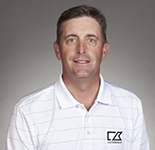TUESDAY, DECEMBER 19, 2017
Long-time PGA and Web.com Tour pro Jeff Gove helps us sort out what matters when it comes to statistics and the better game we all want to play. (Photo: Jennifer Perez/PGA TOUR)
Your career spans the traditional stats era and now the Statcast era. Are stats your friend? How deep do you dare dive before you drive yourself crazy with all that?
“I think it’s good to look at. I like some of the new stuff, like proximity to the hole. I think that’s very telling. I’m not sure I like just greens in regulation and fairways hit, because sometimes you may hit it where you’re looking, even though you’re not in the fairway and you think, Oh, that was a good shot. Even though your statistician might not say it’s a fairway, it might be where you were trying to go. So those can be a little misleading. But I like proximity to the hole for sure, because obviously the closer you are, the more chances you have. And then, scoring average is always the barometer that we need to go by.”
The hard part for the average player is that we can’t get those stats. I sure don’t want my buddies pulling out a tape measure to figure out how far away from the hole they are all the time! So what stats are good for us?
“I think birdie opportunities, if you’re inside of a 15 handicap and you have the ability to hit some shots in there. Every time you’re within five or six steps from the hole, that’s a good opportunity. For us pros, the guy who makes the most birdies usually does pretty well, so I try to pat myself on the back if I make six or more birdies in a round. That’s one of my goals. But if you could say at the end of the day, “I had five good chances today,” I think that could be good. That’s a better way to look at it than saying, “I hit 18 greens, but I was 50 feet away every hole.” Those aren’t birdie opportunities. If you’re within five or six steps of the hole, that’s a realistic chance where you’re trying to make the putt instead of just two-putt.
“I don’t know that tracking three-putts is really the best stat, but maybe how many putts I left short today. Did I get every putt to the hole? Did I give every putt an opportunity? I had a coach several years ago who asked me, “What if you got every putt to the hole throughout the year? What if you gave every putt a chance?” Let’s say you made 20 more putts, but you three-putted five more times. You’re still a positive 15 makes.
“Trying to get every ball up and down is a great stat, too. Whether you made the putt or the chip, just try to challenge yourself every day.”

